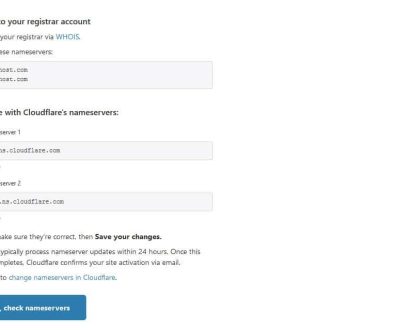What Is McAfee Framework Host Service and Do You Need It?
The McAfee Framework Host Service, often listed in your system’s Task Manager as mfemms.exe or a similar process, is a crucial component of McAfee’s security suit. For many users, especially those unfamiliar with enterprise IT tools, seeing unfamiliar services can raise concerns about system performance and security. This article will explore what the McAfee Framework Host Service is, how it functions, and whether you truly need it on your computer.
What Is the McAfee Framework Host Service?
The McAfee Framework Host Service is a central part of McAfee’s enterprise security products. Essentially, it acts as a communication backbone that allows McAfee applications and modules to receive updates, policies, and instructions from a centralized server. Notably, it’s used in products like McAfee ePolicy Orchestrator (ePO), which is a widely utilized enterprise security management tool.
When installed on a system, the Framework Host allows the client (your computer) to:
- Receive virus definition updates.
- Apply security policies sent from the ePO server.
- Collect and send event data for monitoring and auditing.
- Initiate scans and other administrative commands remotely.
Essentially, it’s the middleman that keeps your antivirus setup functioning smoothly in a managed environment, such as a corporate or organizational network.
Is the McAfee Framework Host Service Necessary?
The answer depends largely on your computing environment. If you’re part of an organization that utilizes McAfee’s enterprise security solutions, then yes, the Framework Host Service is not only necessary but also critical. It ensures that your system complies with your company’s security protocols and receives timely updates and monitoring.
However, if you’re a home user or you recently uninstalled McAfee products, the presence of the Framework Host Service could be an unnecessary leftover that’s using system resources. In such cases, this service may no longer provide any tangible benefit and can be safely removed — provided that all related McAfee applications have also been uninstalled.

How the Framework Host Service Works
The Framework Host operates as a Windows Service, which means it starts automatically with your computer and runs in the background. It listens for signals from the central ePO server and takes action based on policies defined by system administrators. These actions may include updating virus definitions, pushing firewall settings, or triggering system scans.
This service makes use of network bandwidth and CPU cycles, although its footprint is generally low when functioning correctly. However, users have occasionally reported spikes in CPU usage or unexpected errors, particularly if the McAfee installation becomes corrupted or conflicts with other security software.
Common Issues Associated with the Framework Host Service
While generally reliable, this service can sometimes cause issues:
- High CPU Usage: The process may consume significant system resources, especially during updates or scans.
- Network Latency: Frequent communication with the ePO server can slightly bog down network performance.
- Residual Files: After uninstalling McAfee, leftover services like the Framework Host may remain, leading to unnecessary background processes.
- Error Messages: Corrupted installations or missing files can cause the service to malfunction and throw system errors.
In such cases, a reinstall or complete uninstallation usually fixes the problems. McAfee provides dedicated clean-up tools to help remove all traces of their software.

How to Check If It’s Running on Your System
You can verify whether the McAfee Framework Host Service is running by checking your Task Manager:
- Press Ctrl + Shift + Esc to open Task Manager.
- Click on the “Processes” tab.
- Look for entries like McAfee Framework Service, mfemms.exe, or simply “FrameworkHost”.
If you are using a command-line interface or PowerShell, you can also type:
Get-Service -Name *McAfee* | Format-Table -Auto
This will list all McAfee-related services and their current status.
Should You Disable or Remove It?
If you’re on a managed work computer, never disable the McAfee Framework Host unless instructed by your IT department. This could lead to security vulnerabilities and may violate organizational protocols.
On the other hand, if you’re a home user and no longer use McAfee software, you should consider removing it. Simply disabling it might not be sufficient, as it could re-enable itself during system updates or after rebooting.
To remove it completely:
- Uninstall all McAfee products via Control Panel or Settings.
- Use the official McAfee Consumer Product Removal tool (MCPR) to clean residual files and services.
- Reboot your system to ensure all changes take effect.
Alternatives to the McAfee Framework Host Service
For personal use, Microsoft’s built-in Windows Defender is a lightweight and effective antivirus solution that doesn’t require a complex client-server communication model. Other alternatives include:
- Bitdefender
- Norton
- Kaspersky
- Avast
These applications often have their own background services but generally don’t rely on large-scale enterprise infrastructure for home use.
Conclusion
The McAfee Framework Host Service is a vital component in enterprise security environments, facilitating updates, policy enforcement, and centralized monitoring. For corporate users, it’s indispensable, but for personal users who no longer run McAfee products, it may be an unnecessary process that can safely be removed.
As with any background service, understanding its purpose helps users make informed decisions about system performance and security. Unless it’s actively managed or needed, having unnecessary services running can slow down your PC and create digital clutter.
Frequently Asked Questions (FAQ)
- What does the McAfee Framework Host Service do?
- It acts as a communication bridge between your system and McAfee’s central server, primarily to manage security policies, updates, and event tracking.
- Is the McAfee Framework Host Service a virus?
- No, it is an official McAfee component. However, malware can sometimes disguise itself using similar names, so it’s important to verify the file location and origin.
- Can I disable McAfee Framework Host?
- You can disable it, but only if you’re not part of a network using McAfee’s enterprise tools. Otherwise, disabling it may compromise your system’s protection and violate organizational policy.
- How do I remove it completely?
- Uninstall all McAfee products and then use the McAfee Consumer Product Removal tool (MCPR) to clean up residual files and services.
- Is the service necessary for McAfee to work?
- Yes, for enterprise McAfee products and environments, the Framework Host Service is essential for communication and policy management.
- Why Peppertype AI returned “Model unavailable” during template access and the fallback engine selection that maintained workflow - November 20, 2025
- When VPNs make admin logins look like brute force attempts and the enterprise workflow to differentiate remote teams from attacks - November 20, 2025
- When Frase AI summary mode produced incomplete paragraphs with “Chunking error” and the text segmentation method that recovered summaries - November 19, 2025
Where Should We Send
Your WordPress Deals & Discounts?
Subscribe to Our Newsletter and Get Your First Deal Delivered Instant to Your Email Inbox.



